My Favorite Things: An English and ASL Picture Book for Deaf Children and their Families
Editor’s Note: This content is best accessed using a desktop computer.
A Spanish translation, Mis Cosas Favoritas: Un Libro Ilustrado Bilingüe (Español y Lengua de Señas Americana) Dirigido a Niños Sordos y sus Familias, has been published in the Summer 2025 issue of Wordgathering.
Background Story
Reading is one of the most language-rich activities for children. Reading increases the quantity and quality of language children are exposed to, often contains less frequently used and more complex vocabulary, and requires active and responsive turn-taking between caregivers and children. Additionally, there are numerous benefits to reading with young children. The literacy experiences children are provided with within the first three years is related to their language and cognitive abilities later in childhood. For example, toddlers who were read to for at least eleven minutes everyday had stronger reading, spelling, and grammatical skills in both third grade and fifth grade (Brown, Wang & McLeod, 2022).
Shared reading between hearing parents and their Deaf children presents some unique challenges as most Deaf children are born to hearing parents unfamiliar with sign language. While the benefits of shared reading are well known, there is little support for hearing parents in the beginning stages of acquiring sign language who want to read with their young Deaf child. Having English/ASL literacy resources available is important because when hearing parents do learn and use sign language early on with their Deaf child, their children can develop age-appropriate sign language abilities (Caselli, Pyers & Lieberman, 2021).
To address this need, we have created a bilingual book to support the language-rich reading experiences for young Deaf children and their hearing families. The book has English text along with ASL gloss and pictures of each ASL sign–functioning as a memory aide. Hearing parents in the beginning stages of acquiring sign language can use the ASL gloss and ASL pictures to remember how to sign the vocabulary and story. We recommend that hearing parents first visit an online ASL dictionary to see how the sign is produced; the ASL memory aide pictures are there to help remember the ASL signs during shared reading with their child.
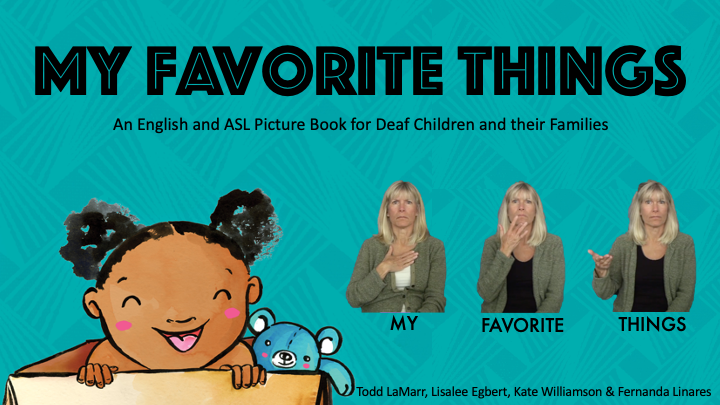
Back to Top of Page | Back to Art | Back to Volume 18, Issue 2 – Winter 2024-2025
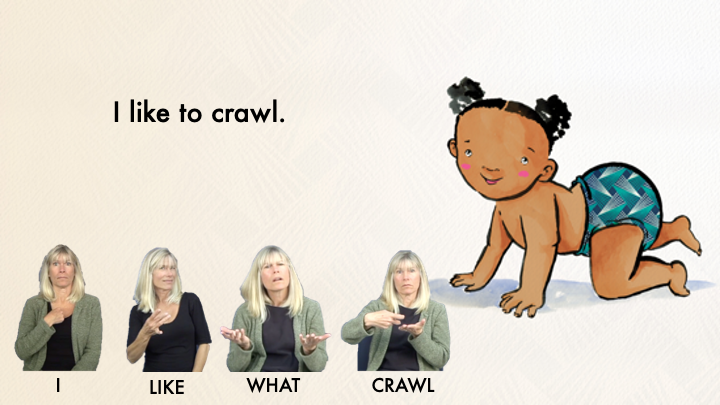
Back to Top of Page | Back to Art | Back to Volume 18, Issue 2 – Winter 2024-2025
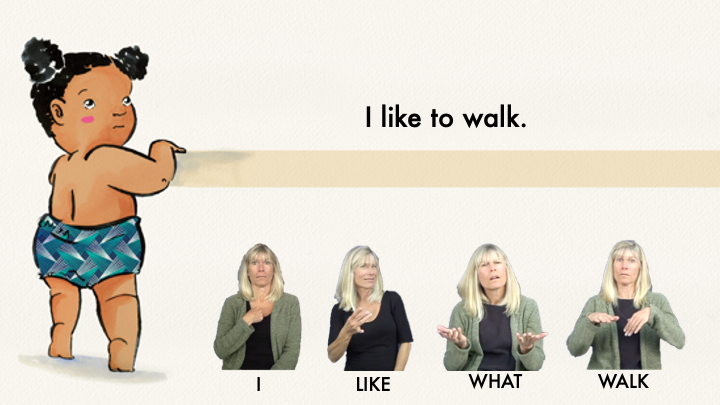
Back to Top of Page | Back to Art | Back to Volume 18, Issue 2 – Winter 2024-2025
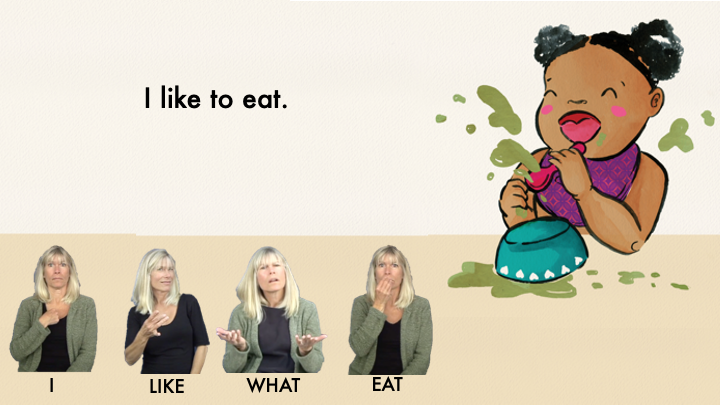
Back to Top of Page | Back to Art | Back to Volume 18, Issue 2 – Winter 2024-2025
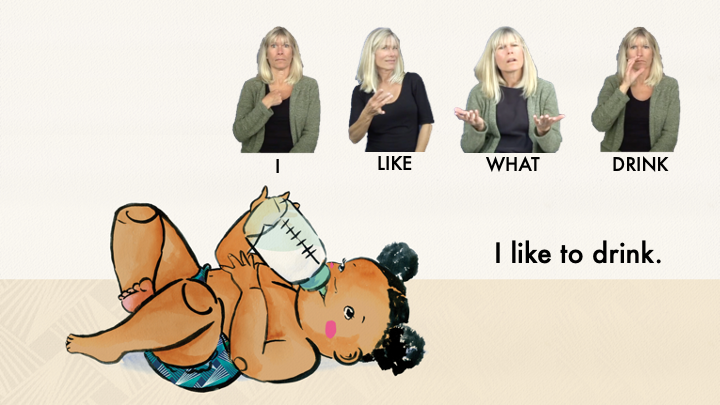
Back to Top of Page | Back to Art | Back to Volume 18, Issue 2 – Winter 2024-2025

Back to Top of Page | Back to Art | Back to Volume 18, Issue 2 – Winter 2024-2025
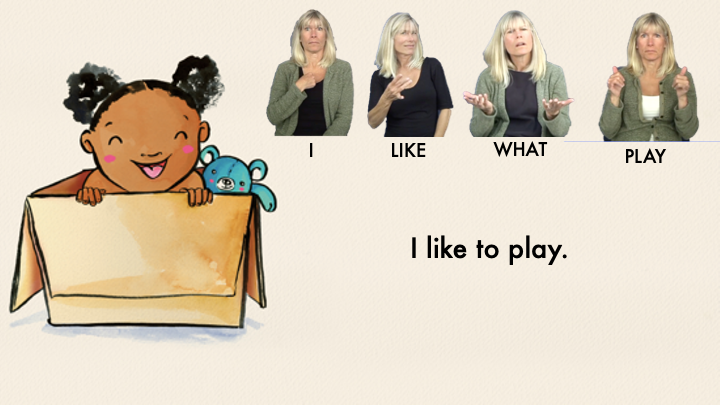
Back to Top of Page | Back to Art | Back to Volume 18, Issue 2 – Winter 2024-2025
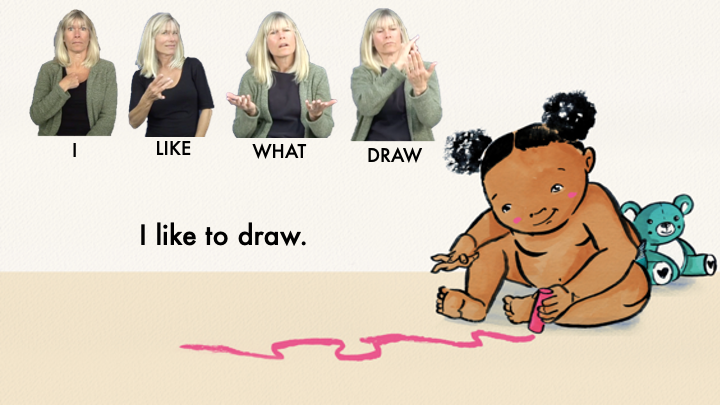
Back to Top of Page | Back to Art | Back to Volume 18, Issue 2 – Winter 2024-2025
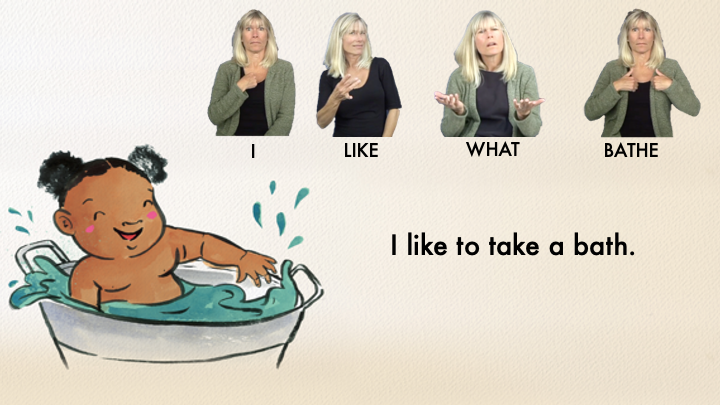
Back to Top of Page | Back to Art | Back to Volume 18, Issue 2 – Winter 2024-2025

Back to Top of Page | Back to Art | Back to Volume 18, Issue 2 – Winter 2024-2025
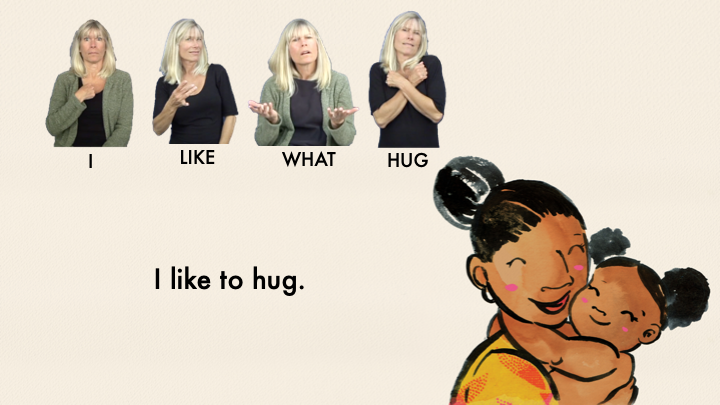
Back to Top of Page | Back to Art | Back to Volume 18, Issue 2 – Winter 2024-2025
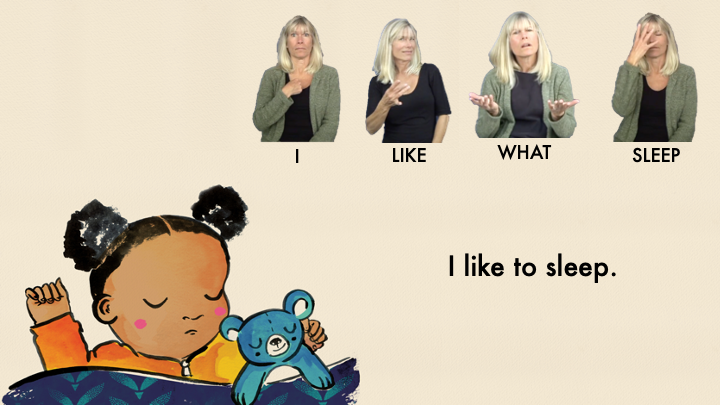
Back to Top of Page | Back to Art | Back to Volume 18, Issue 2 – Winter 2024-2025
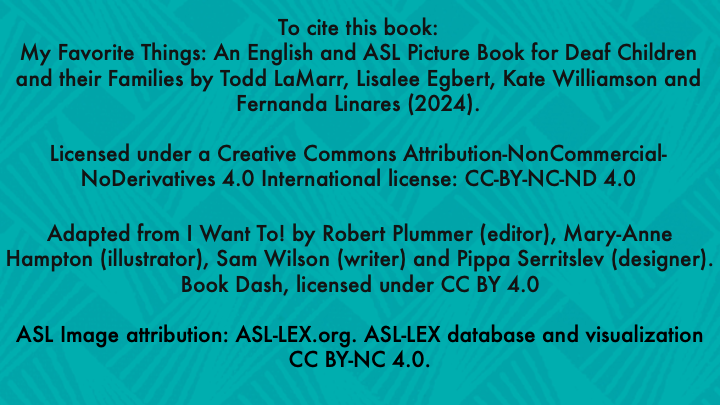
Back to Top of Page | Back to Art | Back to Volume 18, Issue 2 – Winter 2024-2025
References
Brown, M. I., Wang, C., & McLeod, S. (2022). Reading with 1-2 year olds impacts academic achievement at 8-11 years. Early Childhood Research Quarterly, 58, 198-207. DOI: https://doi.org/10.1016/j.ecresq.2021.09.008.
Caselli, N., Pyers, J., & Lieberman, A. M. (2021). Deaf children of hearing parents have age-level vocabulary growth when exposed to American Sign Language by 6 months of age. The Journal of Pediatrics, 232, 229-236. DOI: https://doi.org/10.1016/j.jpeds.2021.01.029.
Back to Top of Page | Back to Art | Back to Volume 18, Issue 2 – Winter 2024-2025
About the Artists and Authors
Todd LaMarr is a professor in the department of Early Childhood Education at American River College in Sacramento, CA. After obtaining a degree in Deaf Studies and American Sign Language (ASL), he worked at the University of California, Davis and Stanford University researching the language and brain development of children learning ASL.
Lisalee Egbert, PhD, is a professor and coordinator of Modern Languages at the University of Texas at Arlington. She researches early education and Deaf education focusing on American Sign Language/English bilingual-bicultural education as it relates to literacy. Her work explores the inter-development of language, literacy, and cognition within the framework of social justice and equality.
Kate Williamson is a librarian at American River College in Sacramento, CA. In addition to her role as a librarian she has supported development of Open Educational Resources for the college since 2016.
Fernanda Linares is a lead teacher at the Sacramento City College child center in Sacramento, CA. Born in Mexico she later migrated to California where she earned a bachelor’s degree in psychology from the University of California, Merced and a master’s degree in child development from Sacramento State University.